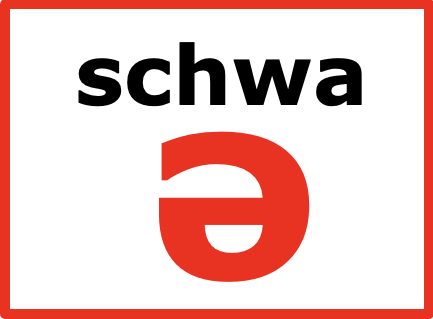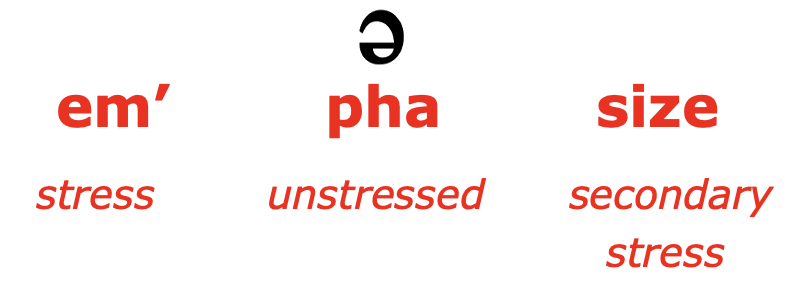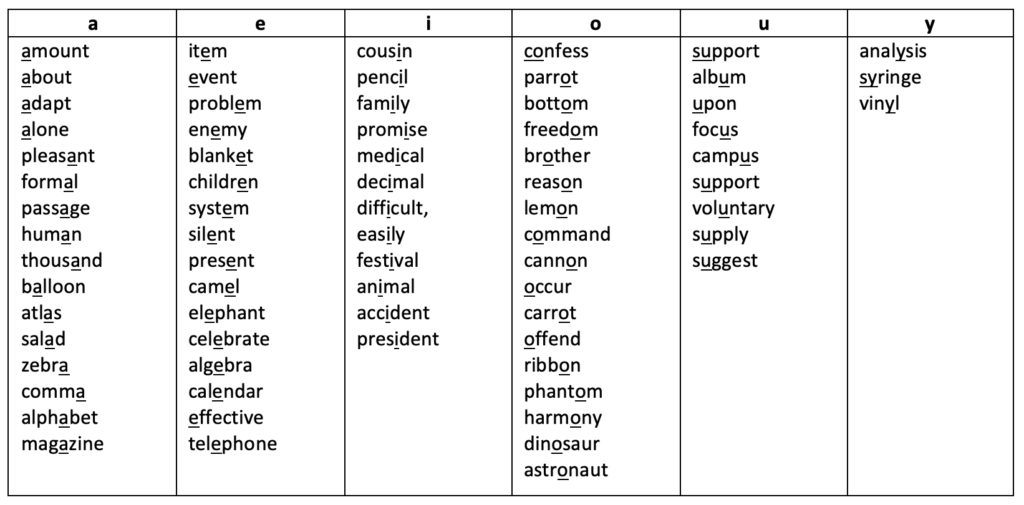Teaching the Schwa Sound in Unaccented Syllables

Schwa is one of those phonics concepts that can be really confusing to students as they learn to decode longer, multi-syllable words. The schwa sound is the most common vowel sound in the English language, accounting for 20% of all vowel sounds (Yule, 1996), and it often is the cause of spelling mistakes. The schwa sound is formed with a neutral mouth position, and it replaces a vowel sound in the unaccented syllables of multi-syllable words. It is sometimes called the “lazy” vowel.
The schwa sound often sounds like a muffled version of the short u sound, although it can sometimes sound more like a muffled short i sound. It can be spelled with any vowel. For example, say these words in a natural voice and notice how the schwa sounds:
- Words with a schwa sound like a muffled short u: magazine, problem, accident, bottom, syringe
- Words with a schwa sound like a muffled short i: human, blanket, difficult, parrot, voluntary, analysis
About Unaccented Syllables

- Every multi-syllable word has a single stressed syllable – this syllable has the most emphasis and its vowel sound is clearly pronounced. The remainder of the syllables may have a secondary stress or be unstressed.
- Example: emphasize has all 3 levels of stress. The first syllable is stressed, the second syllable is an unstressed syllable pronounced as schwa, and the third syllable has a secondary stress.
- Unstressed vowels are usually said faster and at a lower volume than vowels in stressed syllables.
- Schwas can be “lazy” – in some words an unstressed syllable that contains a schwa may disappear completely.
- Example: chocolate, camera, interest, several
- The correct spelling for a schwa sound is hard to remember because the sound cannot be related to the letter.
Teaching Schwa
- When reading, teach students to try using the schwa sound when a long or short vowel doesn’t sound right in a word being read. For example, “I am eating a sal-ad.” First pronounce both a’s short, then substitute schwa uh for the second a.
- To help learn the spelling of a word with a schwa, encourage students to use a “spelling voice” – i.e., pronounce the unstressed syllable the way it would be pronounced if the vowel sound was stressed with a pure sound.
- Also teach them to associate words containing a schwa with their derivative base word such as definition/define.
Activities to promote awareness of schwa:
- Find the schwa, then circle it in words.
- Create a schwa word wall with words grouped by vowel representation.
Here are some examples of schwa for each vowel:

Additional Resources:
- Article about schwa in Reading Rockets
- Schwa activities offered at the SpeechActive website

 Joan Sedita is the founder of Keys to Literacy and author of the Keys to Literacy professional development programs. She is an experienced educator, nationally recognized speaker and teacher trainer. She has worked for over 35 years in the literacy education field and has presented to thousands of teachers and related professionals at schools, colleges, clinics, and professional conferences.
Joan Sedita is the founder of Keys to Literacy and author of the Keys to Literacy professional development programs. She is an experienced educator, nationally recognized speaker and teacher trainer. She has worked for over 35 years in the literacy education field and has presented to thousands of teachers and related professionals at schools, colleges, clinics, and professional conferences.
Thank you! You’ve added another layer to my learning!
i have clear all my doubts related to syllables after reading this wonderfull article thnks for providing a simple understanding article…
After reading this wonderfull post, I have cleared all my questions about syllables. Thank you for offering such an easy to grasp information.
This was an interesting lesson for me since I had not been teaching the schwa sounds with my students. Now I will add it to my lessons.
Thank you for this insightful post! Understanding the schwa sound is so crucial for both reading and pronunciation. I appreciate the strategies you’ve shared for teaching it effectively in unaccented syllables. I can’t wait to implement these techniques in my classroom!
Wonderful article. It’s clear and effective.
Thank you,
Gerry
I love it and it is helpful to me so much
This post on teaching the schwa sound is incredibly insightful! I never realized how crucial it is to help students identify unaccented syllables in their reading. The strategies you’ve shared are practical and easy to implement in the classroom. I can’t wait to try them out with my students! Thank you for making this topic so accessible.